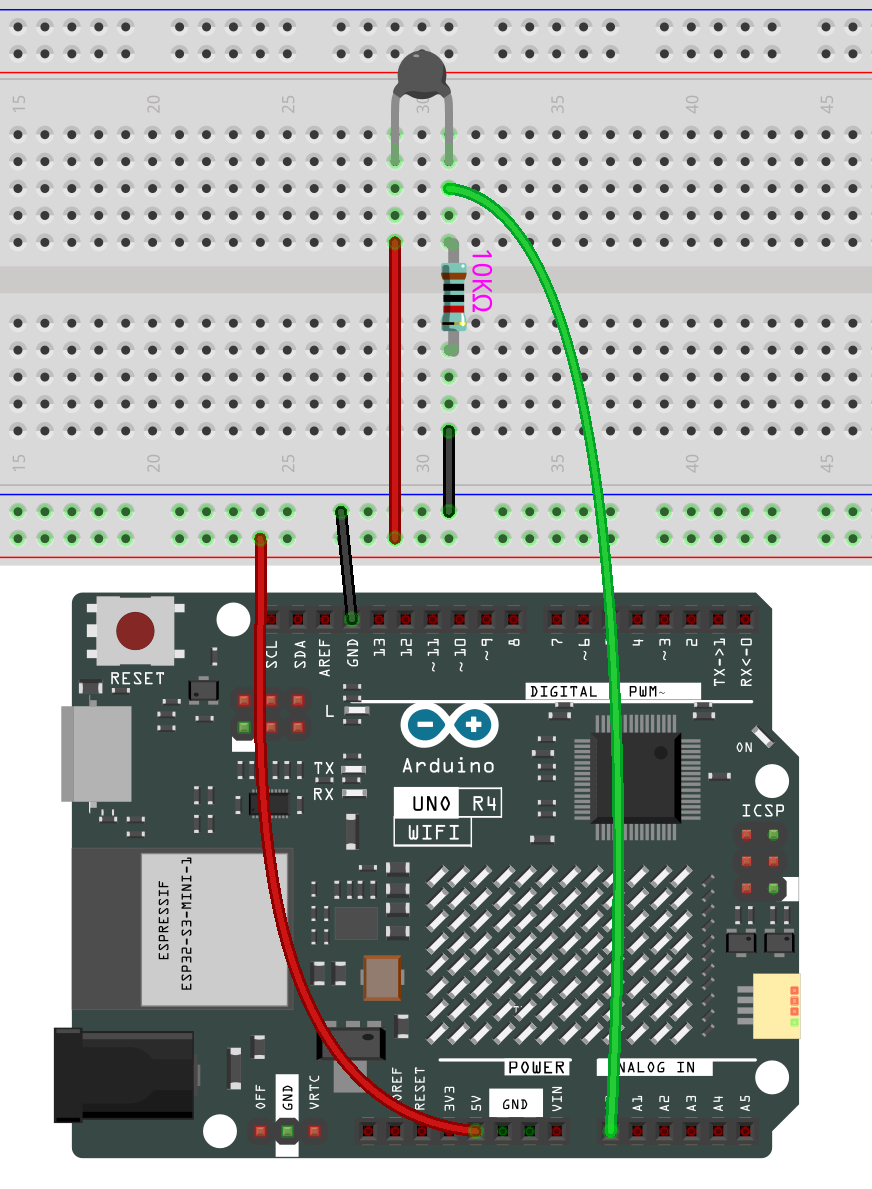Thermistor¶
Overview¶
In this lesson, you will learn how to use thermistor. Thermistor can be used as electronic circuit components for temperature compensation of instrument circuits. In the current meter, flowmeter, gas analyzer, and other devices. It can also be used for overheating protection, contactless relay, constant temperature, automatic gain control, motor start, time delay, color TV automatic degaussing, fire alarm and temperature compensation.
Required Components¶
In this project, we need the following components.
It’s definitely convenient to buy a whole kit, here’s the link:
Name |
ITEMS IN THIS KIT |
LINK |
|---|---|---|
Elite Explorer Kit |
300+ |
You can also buy them separately from the links below.
COMPONENT INTRODUCTION |
PURCHASE LINK |
|---|---|
- |
|
Wiring¶
In this example, we use the analog pin A0 to get the value of Thermistor. One pin of thermistor is connected to 5V, and the other is wired up to A0. At the same time, a 10kΩ resistor is connected with the other pin before connecting to GND.

Schematic Diagram¶

Code¶
Note
You can open the file
02-thermistor.inounder the path ofelite-explorer-kit-main\basic_project\02-thermistordirectly.Or copy this code into Arduino IDE.
After uploading the code to the uno r4 board, you can open the serial monitor to check the current temperature.
The Kelvin temperature is calculated using the formula TK=1/(ln(RT/RN)/B+1/TN). This equation is derived from the Steinhart-Hart equation and simplifies calculations. You can also find more information about this formula on the detailed introduction page of the Thermistor.